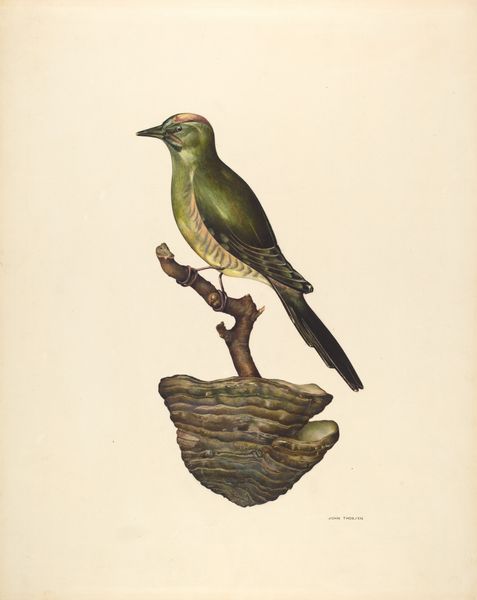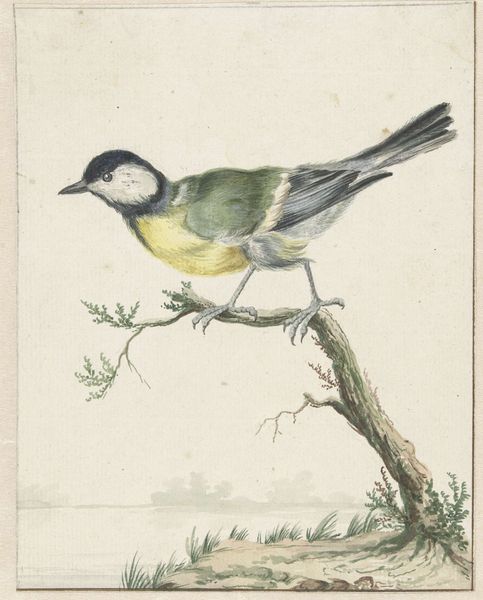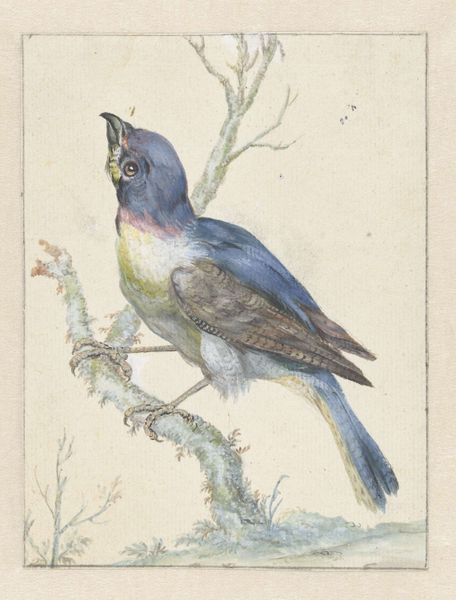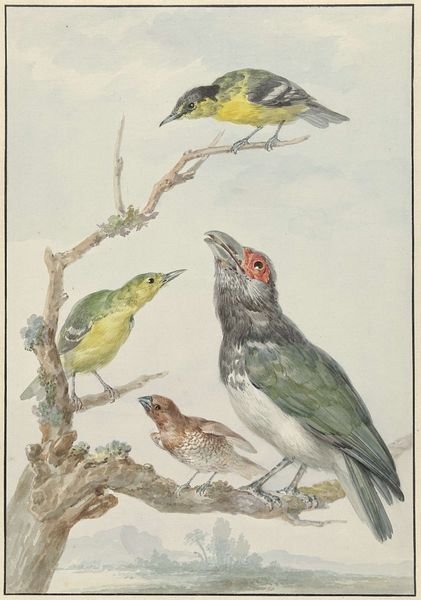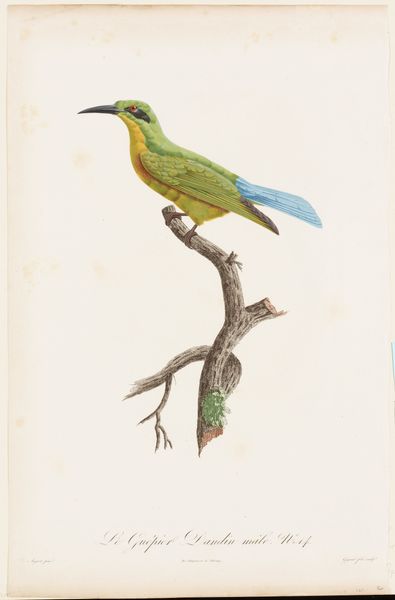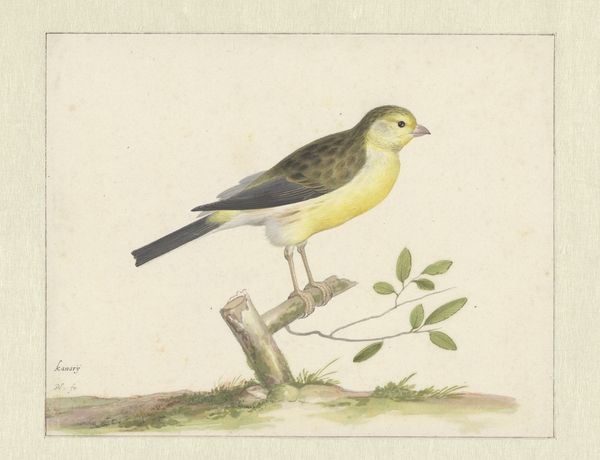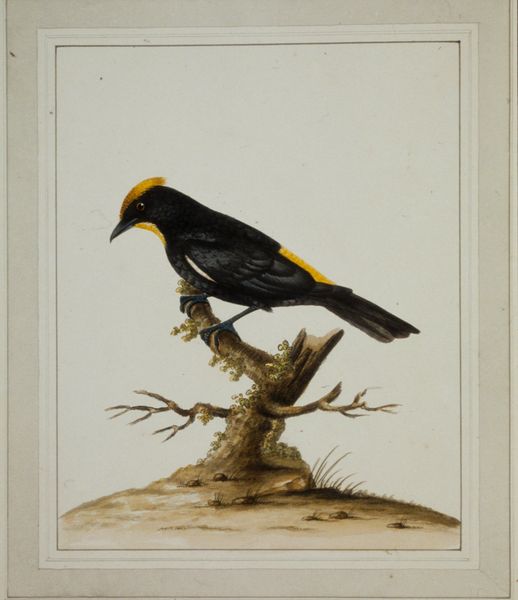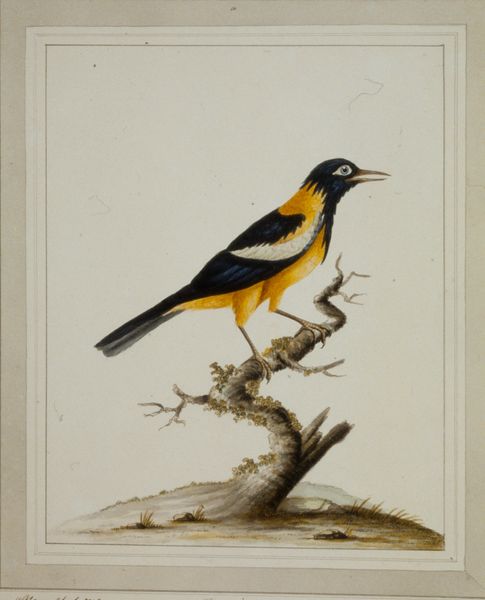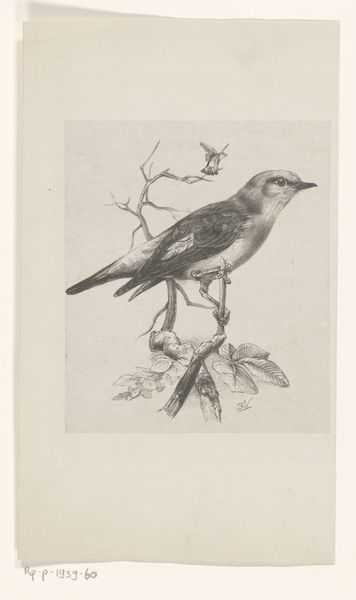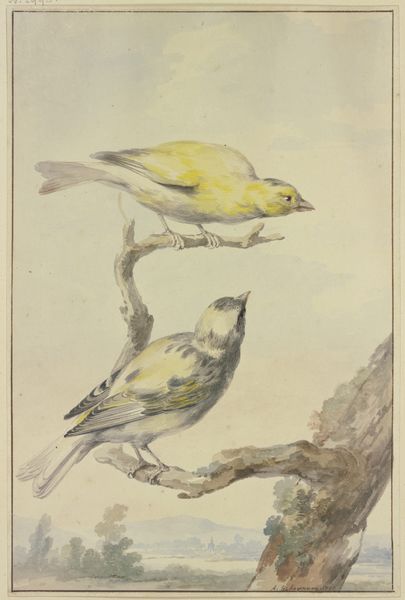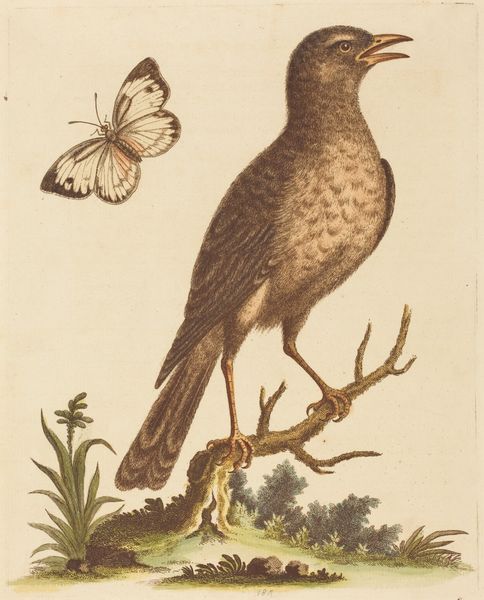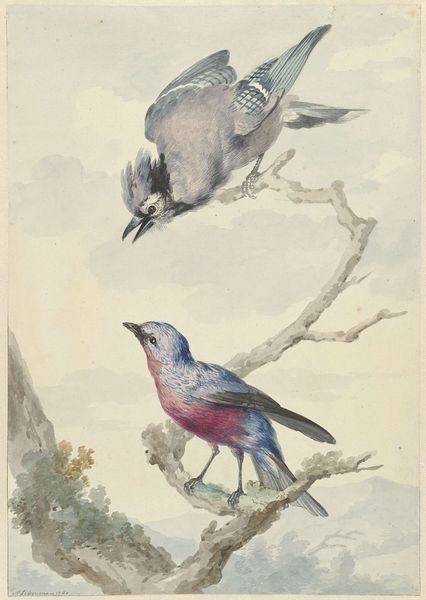
Dimensions: height 288 mm, width 209 mm
Copyright: Rijks Museum: Open Domain
Editor: This is "Groenling," a watercolor painting, probably made sometime in the 1700s, by Barbara Dietzsch. It has this gentle, almost serene quality about it. What strikes you when you look at it? Curator: Immediately, I see the interplay of symbolism embedded within what appears a simple avian portrait. Birds, throughout history, have carried profound symbolic weight, representing freedom, the soul's journey, and even prophecy. Does this particular bird evoke any specific feeling in you? Editor: I guess it seems quite peaceful, like it’s just minding its own business, not a care in the world. Curator: Precisely. Now, consider the color. Green, particularly in this period, connects deeply to themes of nature, growth, and vitality. Is the bird merely "minding its own business," or could it represent a deeper harmony with nature, a sense of untroubled existence we perhaps idealize? Think about the cultural context too. Editor: The harmony makes sense with Romanticism! I always associate it with a fascination for nature and an interest in folklore. Curator: Precisely! And beyond artistic movements, think of broader associations – the bird is perched amidst foliage; where do these visual elements meet human understanding? Is Dietzsch speaking of idealized nature removed from human issues, or does it point to integration? Editor: It’s fascinating to consider it as more than just a pretty bird! I was so focused on the artistic style, but you've opened my eyes to the symbols embedded within it and how they speak to bigger ideas. Curator: Indeed. By exploring the layers of symbolism and considering the historical context, we unlock a deeper understanding of the artist's intention and the cultural dialogue it represents. It reveals to us more than just avian biology; it reveals something human in the bird's gentle pose.
Comments
No comments
Be the first to comment and join the conversation on the ultimate creative platform.
